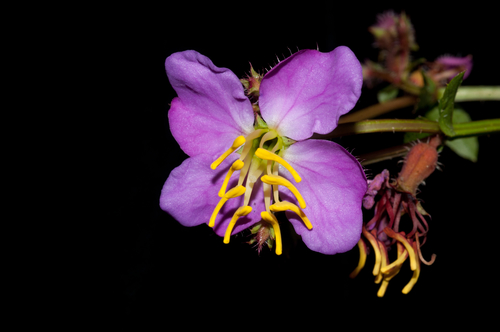Closely related plant species frequently occur in sympatry and overlap in ecological characters. This overlap may lead to resource competition (i.e. for pollinators) and result in character displacement (i.e. divergence in floral phenotype or phenology) or reproductive interference (i.e. hybridization). Shared ecological characters may, on the other hand, also promote facilitation among co-occurring species and increase reproductive success.
This summer, together with my new student Ashlee Kerber at CU Boulder, I will start looking more closely at the geographical distribution, phenology and pollination biology of the only Melastomataceae genus that has seen a major shift out of the tropics and colonized the South-Eastern United States: Rhexia! Rhexia (meadow beauties) contains 11 species which mostly occur in swampy areas and commonly co-flower. They are all specialized to buzz-pollination by bees, but no study so far has investigated whether co-flowering species actually share the same bee pollinators or partition the pollination niche space, and how this varies across communities.
Ashlee Kerber has just been funded by CU Boulder’s UROP to dig deeper into the pollination biology and floral trait diversity of Rhexia! Stay tuned for results coming in over the summer… 😀
photo credit: Fabián Michelangeli, NYBG
